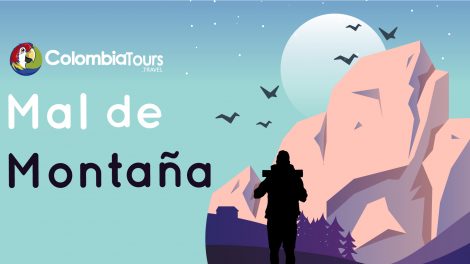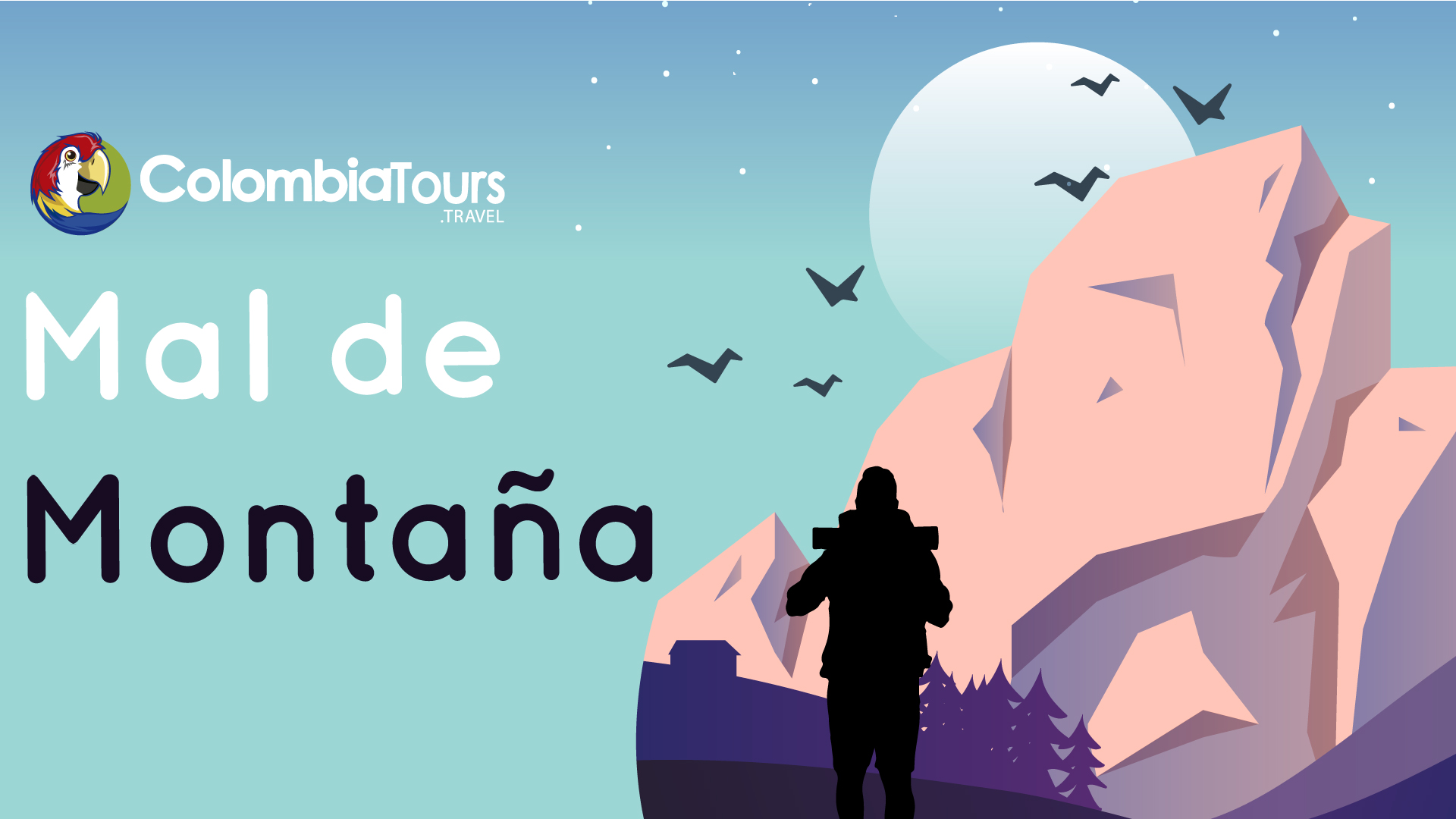
El mal de montaña como es llamado de manera popular o Soroche proviene de la lengua quechua suruqchi o suruqch. Es la falta de adaptación de nuestro organismo a la falta de oxígeno de la altitud, es decir, este trastorno está relacionado de manera directa con la velocidad de ascenso y de manera inversa estos síntomas desaparecen normalmente al descender.
Su principal causa es la falta de oxígeno (hipoxia), esta es causada por la presión atmosférica que disminuye con la altura, afectando principalmente a los alvéolos pulmonares; ya que estos no son capaces de transportar la misma cantidad de oxígeno a la sangre pues a medida que aumenta la altitud, el porcentaje de oxígeno en el aire permanece constante, pero la presión atmosférica disminuye, lo que hace que el aire se vuelva más delgado, por lo que hay menos oxígeno disponible.
Este trastorno se presenta en altitudes cercanas a los 2500 hasta la denominada zona de la muerte a los 7500 MSNM de altitud. Este mal de altura se presenta a partir de la exposición a la hipoxia y es más frecuente en menores de cincuenta años y en los residentes que habitan menos de los 1000 metros de altitud.
La mayoría de las personas pueden ascender entre 1500 y 2000 m en un día sin problemas, pero aproximadamente el 20% de las personas que ascienden hasta 2500 m y el 40% de los que ascienden hasta 3000 m sufren alguna forma de mal de altura.
Destinos en Colombia por encima de los 1.500-2.000 MSNM
- Bogotá 2.650 msnm
- Guatavita, Cundinamarca 2.700 msnm
- Villa de Leyva, Boyacá 2.150 msnm
- Suesca 2.584 msnm
- Monguí 2.900 msnm
El mal de montaña puede desarrollarse a altitudes más bajas en personas muy sensibles. Los síntomas suelen manifestarse al cabo de 6-10 horas del ascenso y a menudo comprenden dolor de cabeza, y uno o más de los síntomas citados a continuación: sensación de estar a punto de desmayarse, pérdida del apetito, náuseas, vómitos, cansancio, debilidad o irritabilidad.
Algunas personas describen los síntomas como similares a los de una resaca; los síntomas suelen durar de 24 a 48 horas. Raramente, el mal agudo de montaña puede progresar hacia un tipo más grave de mal de altura, denominado edema cerebral
Los órganos afectados con mayor frecuencia por el mal de altura son
• El cerebro
• Pulmones
En estos órganos raramente se presentan edemas de las alturas
Los edemas son la acumulación de líquidos que aparece por lo general entre las 24 y las 96 horas posteriores a un rápido ascenso a más de 2500 m de altitud.
Posibles factores de riesgo
Los posibles riesgos de sufrir mal de montaña varían mucho de una persona a otra. Pero en general, el riesgo aumenta al:
• Sufrir una enfermedad previa por altitud
• Vivir a nivel del mar o a una altitud muy baja (por debajo de los 900 metros)
• Subir a mucha altitud demasiado rápido
• Realizar un esfuerzo excesivo
• Dormir a demasiada altura
Aclimatización
Con el tiempo, el organismo se adapta (aclimatación) a altitudes mayores incrementando la respiración y produciendo más glóbulos rojos (eritrocitos) para transportar oxígeno a los tejidos, así como realizando otras adaptaciones.
La mayoría de las personas que sufren del mal de montaña, se pueden adaptar a alturas de hasta 3000 m en pocos días. Adaptarse a alturas más elevadas requiere muchos días o incluso semanas, pero algunas personas pueden, con el tiempo, llevar a cabo casi todas las actividades normales a alturas superiores a los 5300 m. Sin embargo, nadie puede aclimatarse por completo a vivir de forma permanente por encima de esa altitud.
¿Sabías que?
El mal de montaña, se produce por una falta de oxígeno a grandes altitudes.
• Los síntomas comprenden dolor de cabeza, cansancio, náuseas o pérdida de apetito, irritabilidad y, en casos más graves, dificultad respiratoria, confusión e incluso coma.
• El médico diagnostica los males de altura basándose principalmente en los síntomas.
• El tratamiento puede incluir reposo, descender a una altitud más baja y en algunas ocasiones tratamiento farmacológico, administración de oxígeno adicional o ambas cosas.
• Estos trastornos pueden prevenirse ascendiendo de forma gradual y a veces tomando medicación.
Prevención
Ritmo de ascenso
La mejor manera de prevenir el mal de montaña es ascender lentamente. La altitud a la que una persona duerme es más importante que la altitud máxima alcanzada durante el día. El control de la velocidad de ascenso (lo que se conoce como ascenso gradual) es esencial para cualquier actividad que se realice por encima de los 2500 metros.
Por encima de 3000 metros, los escaladores o excursionistas no deben aumentar la altura a la que duermen más de 300-500 metros al día, y deben incluir un día de descanso (dormir a la misma altura) cada 3 o 4 noches antes de dormir en altitudes mayores.
Si no pueden limitar el ascenso diario a menos de 500 metros, deben limitar su ascenso promedio durante la totalidad del ascenso a menos de 500 metros al día. Esto último puede requerir agregar días de descanso. Durante los días de descanso puede ascenderse a alturas más altas, siempre y cuando se regrese al nivel inferior para dormir
Los síntomas del mal de montaña se pueden confundir con una resaca, agotamiento físico, una migraña o una enfermedad vírica.
Medidas generales
Evitar esfuerzos extenuantes durante un día o dos después de la llegada puede ayudar a prevenir el mal de altura. También debe evitarse el consumo excesivo de alcohol, los opiáceos y los sedantes, en especial poco antes de ir a dormir.
Los bebedores habituales de cafeína deben ser conscientes de la posibilidad de sufrir dolores de cabeza relacionados con la abstinencia de cafeína, si dejan de consumirla durante este periodo.
A pesar de que una buena capacidad física permite un mayor esfuerzo en altura, no protege frente a ninguna forma de este mal.
Al escalar
• No consuma alcohol
• No tome mucho líquido
• Consuma comidas regulares que sean ricas en carbohidratos
• Usted debe evitar las grandes alturas si padece alguna enfermedad cardíaca o pulmonar.





